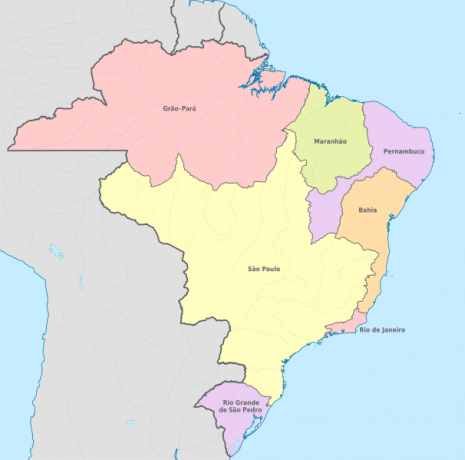The Emboabas War was a conflict that took place in the 17th century, more precisely between 1707 and 1709. Therefore, while Brazil was still a colony of Portugal. The armed dispute took place due to the dispute over the exploration of the other recently discovered by the Paulistas, in the region of Minas Gerais.
A curiosity about the name “emboaba” is that initially it was used by indigenous people to describe birds that had feathers even on their feet. Afterwards, it was used pejoratively to name outsiders who wore boots. The Emboabas were a group made up mostly of Portuguese, followed by migrants from other parts of the territory.
see more
Scientists use technology to unlock secrets in ancient Egyptian art…
Archaeologists discover stunning Bronze Age tombs in…
In 1707, still in the context of colonial Brazil, the discovery of deposits in the region where today is Minas Gerais provoked a series of changes in the configuration of the country. Thousands of people, attracted by the possibility of becoming rich overnight, moved to the mining region.
Responsible for discovering gold, the bandeirantes from São Paulo obviously intended to be in charge of all exploration of the new source of wealth, even more, taking into account that the mines were located in the territory inhabited by they. Led by Manoel de Borba Gato, who was the chief guard of the mines, they claimed the exclusivity of exploiting the gold deposits.
On the other hand, the Emboaba, under the leadership of the Portuguese Manuel Nunes Viana, who was a lucky merchant, put the leadership of the bandeirantes in check and ended up defeating them.
The outsiders settled in communities within the territory that was inhabited by the Paulistas. Through these places, they often watched all the actions of the bandeirantes. The leader organized several expeditions with the intention of weakening the São Paulo resistance.
In 1708 the Emboabas attacked the Paulistas in the territory of Cachoeira do Campo, in the Captaincy of Minas Gerais. Bandeirantes were expelled from the site and lost control of two of the three main gold exploration sites.
Over the course of two years, a series of conflicts were recorded, the most significant of which was the one known as “Capão da Traição”. In this episode alone, the Portuguese, always with the aim of asserting sovereignty as colonizers, killed more than 300 bandeirantes from São Paulo.
After successive defeats by the Emboabas and cornered in the region of Rio das Mortes, the Paulistas saw Manuel Nunes Viana proclaimed the governor of the region of mines. This act was even an affront to the Crown, which was the owner of all schools in relation to the colony.
Bento do Amaral Coutinho he was charged by the emboabas with expelling the paulistas who were still in the territory. These, in turn, did not put up any kind of resistance.
It was in 1709 that the Crown decreed the separation of the captaincies of São Paulo, Minas Gerais and Rio de Janeiro. Due to the intervention of Portugal, together with the governor of Rio de Janeiro, Antônio de Albuquerque Coelho de Carvalho, Nunes Viana was overthrown from his post and expelled from the site of the mines.

The emboaba took refuge in his farm, located near the São Francisco river, and the conflicts finally came to an end.
The War of the Emboabas came to an end in 1709, with the defeat of the bandeirantes from São Paulo. Below are listed some of the main consequences of the conflict: